Get PeakVisor App
Sign In
Search by GPS coordinates
- Latitude
- ° ' ''
- Longitude
- ° ' ''
- Units of Length

Yes
Cancel
Share ×

Scan the QR code and open PeakVisor on your phone
❤ Wishlist ×
Choose
Delete
Despite its relatively low elevation in comparison to many of Colorado’s more well-known ranges, the Elkhead Mountains are a pristine, rugged, and remote range that is well worth a visit. The Elkheads contain 80 named summits, of which Sand Mountain (10,869 ft/3,313 m) is the highest. Black Mountain (10,827 ft/3,300 m) is the most prominent peak, with 2,415 feet (736 meters) of prominence.
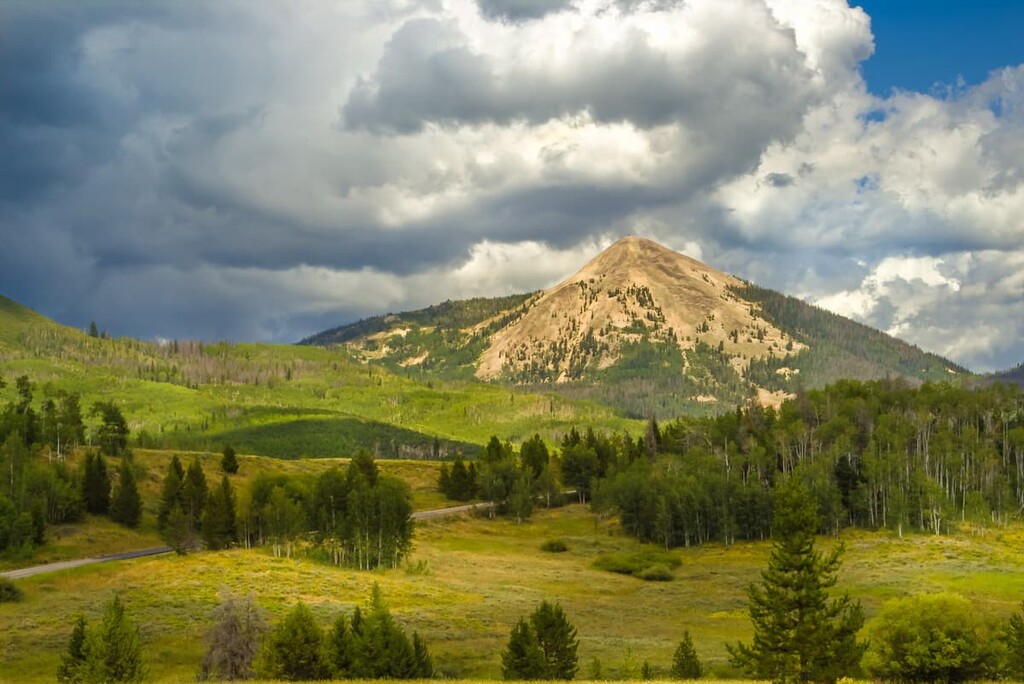
The Elkhead Mountains stretch approximately 16 miles (26 km) from east to west, and 10 miles (16 km) north to south, near Colorado’s border with Wyoming in the northwestern part of the state. The range lies in Moffat and Routt counties. It is somewhat unusual in terms of US mountain ranges, in that it runs east to west instead of north to south.
The Elkheads are a subrange of the Park Range, and the Elkhead range contains 80 summits. Notable Elkhead peaks include Sand Mountain (10,869 ft/3,313 m), Black Mountain (10,827 ft/3,300 m), Hahns Peak (10,774 ft/3,284 m), and Bears Ears (10,577 ft/3,224 m).
The majority of the Elkhead range is located within Routt National Forest. Routt is a 1,125,438-acre (455,448 ha) US Forest Service-managed area that is part of the trifecta of land areas making up Medicine Bow–Routt National Forest (which also consists of Medicine Bow National Forest and Thunder Basin National Grassland). The MB-RNF collectively consists of over 2 million acres (809,000 ha) of land.
The Elkhead Mountains are fairly low in elevation compared to many of the other major ranges in Colorado, such as the Elk, Sawatch, Sangre de Christo, San Juan, and Front ranges, all of which contain numerous peaks over 14,000 feet (4,260 meters). There are 58 recognized summits in the state which are over 14,000 feet (4,260 m), and over 600 summits over 13,000 feet (3,962 m).
In comparison, the highest summit in the Elkheads doesn’t even scratch 11,000 feet (3,350 m). The range also contains little to no opportunities for technical climbing, and it has few established hiking trails. Unlike many of Colorado’s more popular ranges, the Elkhead Mountains also have few lakes and streams.
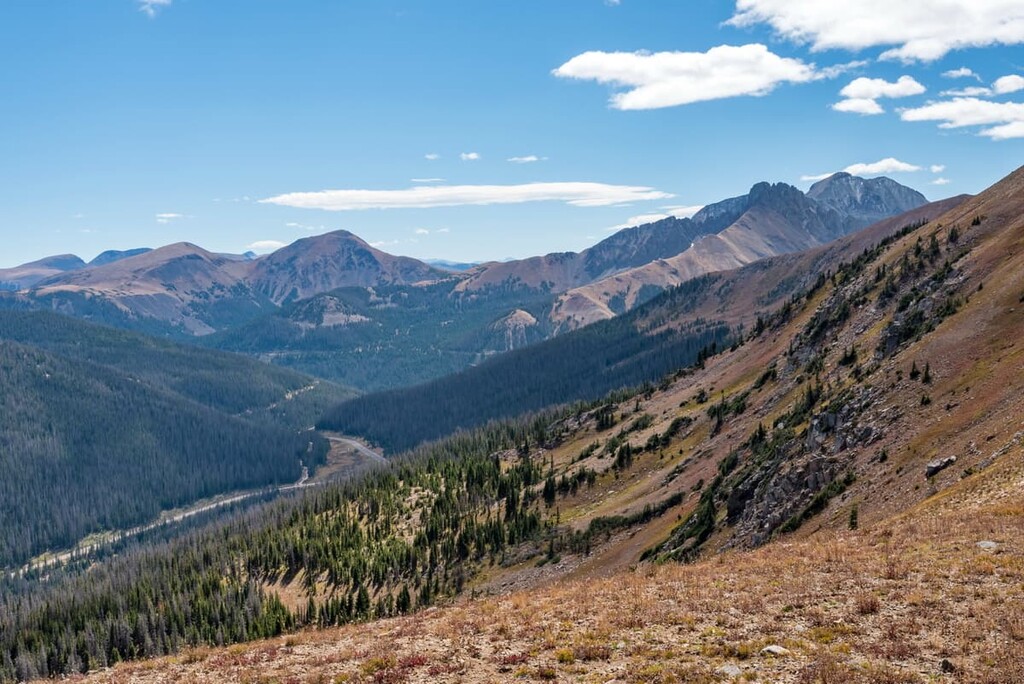
That said, the heavily-fished Elk River runs north to south through the center of the range. The 1,000-acre (404-ha) Steamboat Lake, which sits at 8,100 ft (2,469 m) below Hahns Peak (10,774 ft/3,284 m), is another notable Elkhead attraction, as is the 900-acre (364-ha) Elkhead Reservoir in eponymous Elkhead Reservoir State Park.
The Elkhead Mountains were formed entirely via volcanic action. A report in the Guidebook to the Geology of Northwest Colorado describes the range as “the erosional remnants of an isolated Tertiary volcanic field.”
Specifically, the Elkheads were formed during the Miocene epoch, which occurred approximately 24 to 5 million years ago. Post-Miocene uplift and erosion has subsequently revealed alkali basalt lavas, pyroclastic deposits, volcanic necks, and dikes, which mark strombolian and hydrovolcanic and activity at a variety of erosive depths.
The majority of the volcanic rocks found in the Elkheads can be subdivided into two general categories: light-colored intermediate porphyritic trachytes and dark-colored basalts and lamprophyres. A 1978 U.S. Geological Survey report offers extensive information on the geology of the Elkhead Range and other subranges in the Park Range.
In general, Elkhead rock is quite loose and chossy, and the mountains are scree and talus covered, with few opportunities for technical climbing.
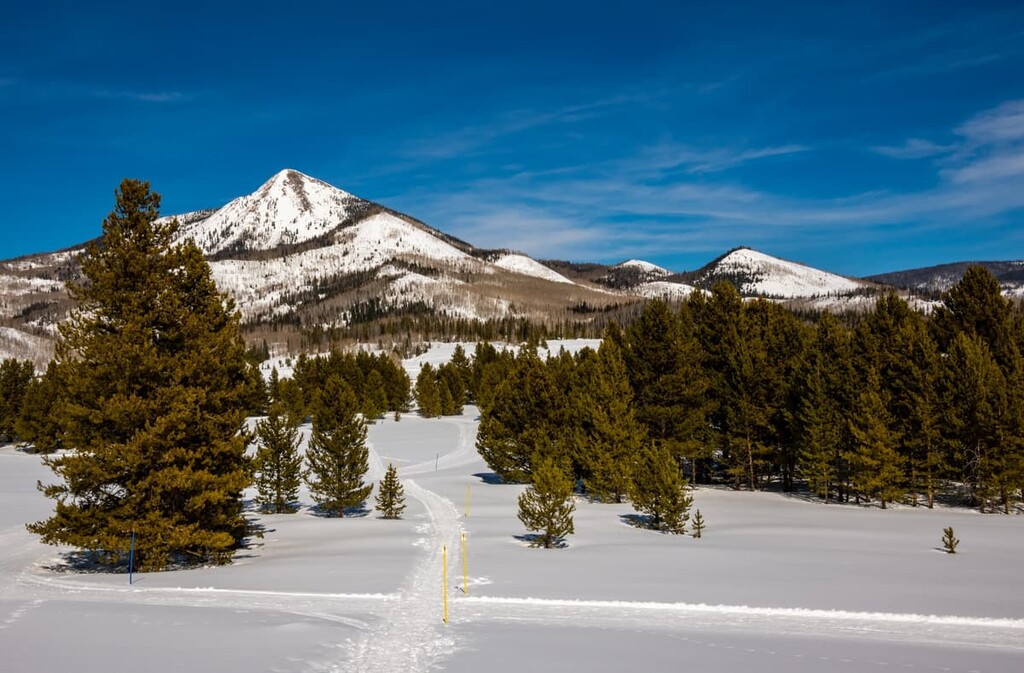
The Elkhead Mountains are home to a variety of flora. You’ll find mixed coniferous forest here, with spruce and fir forest at higher elevations, along with sagebrush, aspen, and foothill shrub. The timberline here is among the lowest in Colorado, somewhere in the range of 10,000 to 11,000 feet (3,050 to 3,350 m).
You’ll find many of the same large mammals in the Elkheads that you’ll find in other Colorado ranges, including elk, deer, cougar, fox, coyote, black bear, and pronghorn antelope. The range contains one of the densest populations of elk and deer in the state, and as such hunting is a common attraction.
Other wildlife includes the prairie rattlesnake, sagebrush lizard, short-horned lizard, and rainbow trout, which is commonly fished in the Elk River.
Of particular note is the diverse amount of bird life here. Species at low elevations include sage thrasher, Brewer’s sparrow, poorwill, violet-green swallow, ruby-crowned kinglet, and warbling vireo. At higher elevations among the spruce-fir forest, you’ll find pine grosbeak, Gray and Steller’s jays, golden-crowned kinglet, and American three-toed woodpecker.
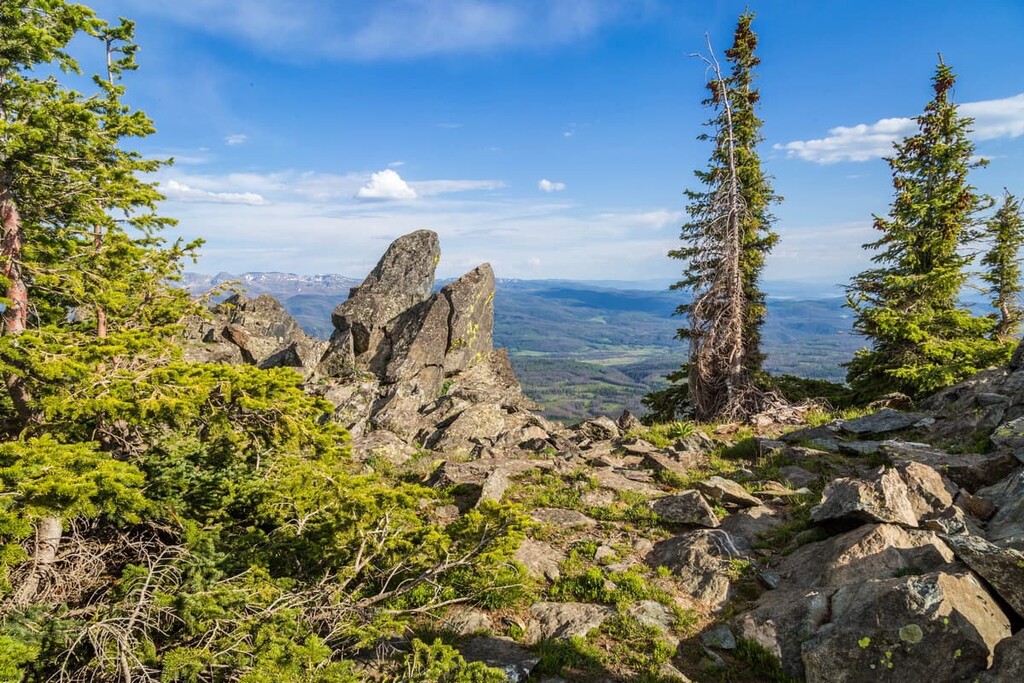
Flammulated owls are often heard at night. Many butterflies, including Hydaspe fritillary, are on display in the Elkheads as well.
The Ute and Eastern Shoshone historically lived in the southern and northern regions of the Elkhead Mountains, respectively. The region was the Ute summer hunting ground for hundreds of years prior to the arrival of Europeans in the area.
Like many of Colorado’s ranges, the Elkheads were home to a variety of gold and silver mines in the latter half of the nineteenth century. Steamboat Springs, the area’s largest settlement, was founded in 1900.
Given the relative lack of large lakes, the range isn’t visited by fishermen, though hunting for deer and elk is common in the fall.
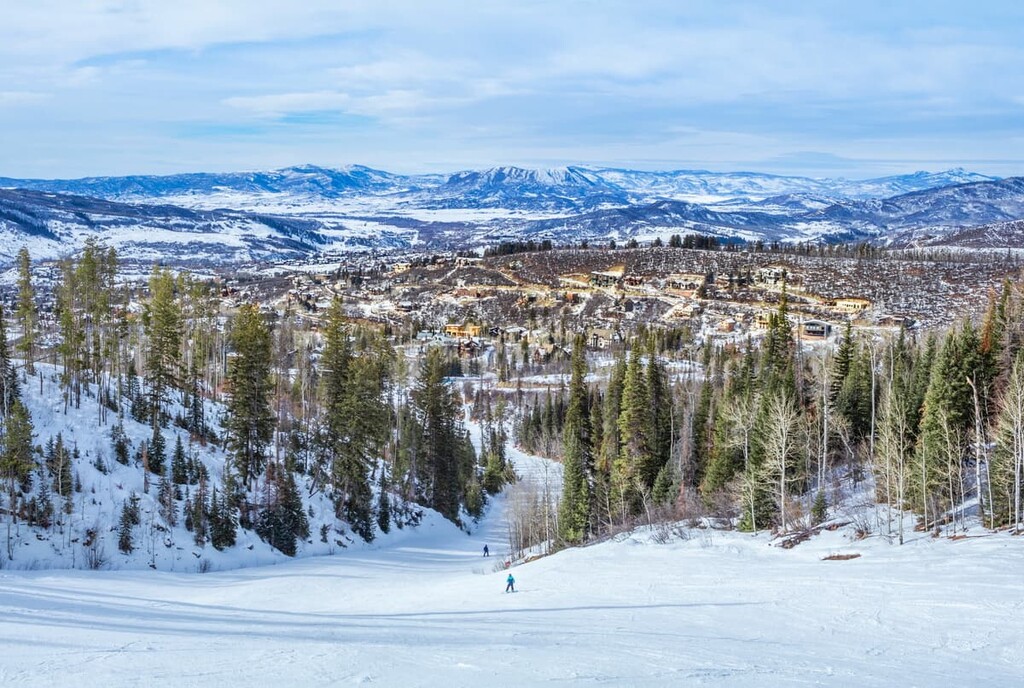
Despite the stellar hiking opportunities in the range, the Elkheads are perhaps Colorado’s least-known and least-visited mountain range, due to its relatively remote nature, low elevation, and lack of major waterways or water bodies. Summit registers show that ascents of many Elkhead peaks have actually been decreasing since the latter half of the twentieth century).
When you visit many parts of the Elkheads, you’ll likely have the mountains almost to yourself. The three peaks below are some of the only in the range with established trails to the summit and, as such, they are among the most popular.
Every peak in the Elkheads is rugged and remote, so be sure to bring a map and compass, particularly if you’re doing a peak that’s not one of the ones listed below. They may be low elevation, but these aren’t mountains for the inexperienced.
The knobby Hahns Peak (10,774 ft/3,284 m) is arguably the Elkhead’s most famous summit, as well as the easternmost peak in the range. It’s also the easiest to access, given its close proximity (30 mi/48 km) to Steamboat Springs and well-marked trail (compared to other peaks in the range). The trail is 3.8 miles (6.1 km) out-and-back, with 1,500 feet (457 m) of elevation gain. The hike takes approximately 2 to 4 hours to complete and is quite steep.
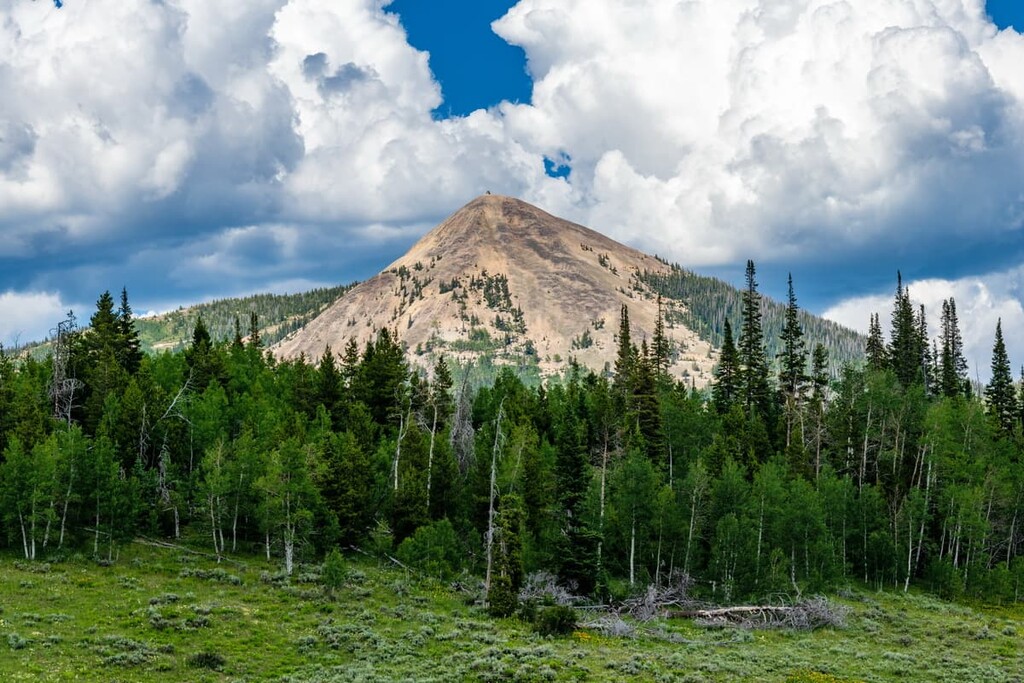
To reach the trailhead, take US Route 40 north from Steamboat Springs, then turn right onto Route 129, followed by another right onto Forest Road 490. Take a left after one mile, then another left after 0.3 miles (0.5 km), and you’ll soon see the parking area. High clearance vehicles are recommended.
Sand Mountain (10,869 ft/3,313 m) is one of the Elkhead range’s most beautiful peaks. The roundtrip hike to the summit is approximately 3 miles (4.8 km) long, with 1,500 ft (457 m) of elevation gain.
From Steamboat Springs, take County Road 129 north off of Highway 40. Drive for 26 miles (41.8 km) then turn left on County Road 62 past Steamboat Lake. Head west and south for about 3.5 miles (5.6 km) to Forest Road 42. Turn right here and head 0.6 miles (1 km) to the Forest Service gate, which is locked until July each year. Drive County Road 42 until it intersects FR 480 on the left. Take this rough track for 3.3 miles (5.3 km) until reaching 480A, and take a left here, then follow to the end to reach the trailhead.
Follow the trail uphill and to the south to begin your hike.
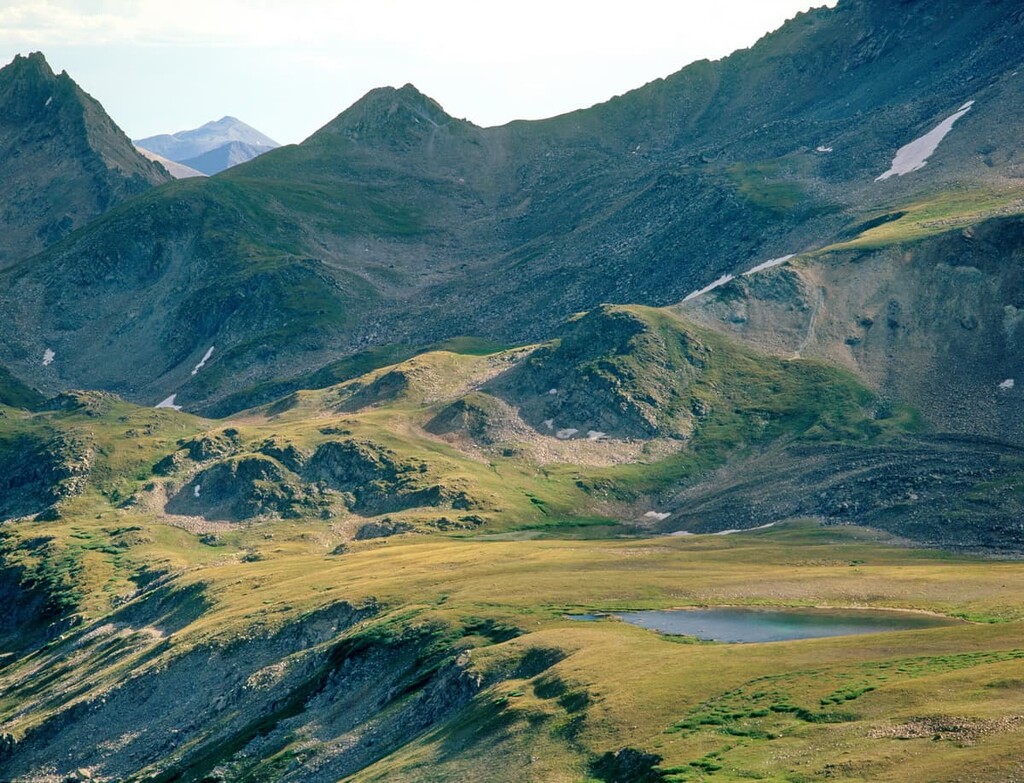
Hiking the southeast ridge up Black Mountain (10,827 ft/3,300 m) is another stellar outing in the Elkheads, spanning 6 miles (9.7 km) out-and-back, with a mere 900 feet (274 m) of elevation gain. Black Mountain is the most prominent peak in the range, and the views from the summit are sublime.
To reach Black Mountain’s trail, you’ll travel 11 miles (17.8 km) north of Craig on Highway 13 before turning right onto County Road 27, which later becomes Forest Road 110. Stay on this road for 4.4 miles (7.1 km) and park at a prominent saddle. The route begins to the north.
Looking for a place to stay near the Elkhead Mountains? Here are some of the best towns and communities in the region:
The Elkheads are approximately an hour from Steamboat Springs, making the town the closest major destination and easiest launch point for hiking and climbing. The town has a population of 13,000 and was incorporated in 1900.
According to the town’s website, “Steamboat Springs is thought to have originated around the early 1800s when French trappers thought they heard the chugging sound of a steamboat's steam engine. The sound turned out to be a natural mineral spring, to be named the Steamboat Spring.”

The town is known worldwide as a top-notch winter ski destination, with the Steamboat Ski Resort sitting as the crown jewel resort in the region. Despite its small size, Steamboat Springs has reportedly produced more Winter Olympians than any other town on the continent.
The town is also well-known for the Steamboat Winter Carnival, an annual festival and parade held since 1914, and the Steamboat Hot Air Balloon Festival each summer.
Denver, Colorado’s capital and by far its largest and most populous city, is approximately 3 hours from the Elkhead Mountains. It sits at over 5,000 feet (1,524 m) in elevation, hence its nickname “The Mile High City.” It is the most populous city in the US Rockies.
Denver’s attractions include Larimer Square, a hundred-year-old district and the city’s oldest block, home to numerous landmark 19th-century buildings. The Denver Art Museum, Red Rocks Amphitheater, Molly Brown’s Mansion, the Denver Zoo, and the Denver Botanical Gardens are other notable sites.
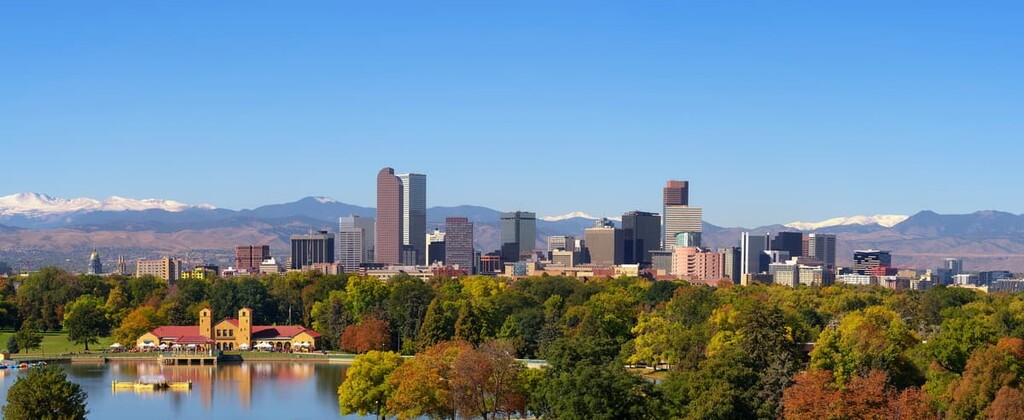
As the Elkhead Mountains are essentially located entirely on US Forest Service land, entry is free and dispersed primitive camping is allowed free of charge within the park. Many trailheads, such as those for Sand Mountain and Black Mountain, have primitive campsites nearby.
Explore Elkhead Mountains with the PeakVisor 3D Map and identify its summits.








